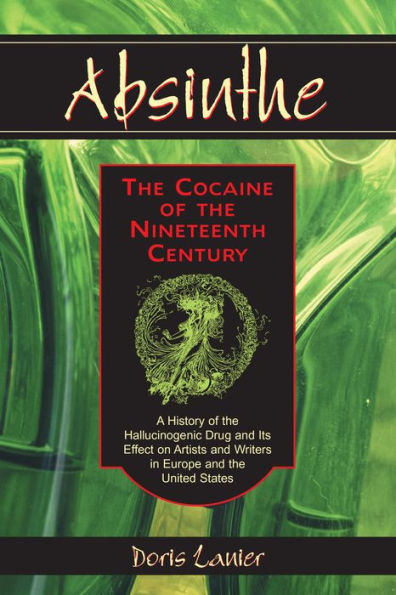With an alcohol content sometimes as high as 80 percent, absinthe was made by mixing the leaves of wormwood with other plants such as angelica root, fennel, coriander, hyssop, marjoram and anise for flavor. The result was a bitter, potent drink that became a major social, medical and political phenomenon during the late nineteenth and early twentieth centuries; its popularity was mainly in France, but also in other parts of Europe and the United States, particularly in New Orleans.
Absinthe produced a sense of euphoria and a heightening of the senses, similar to the effect of cocaine and opium, but was addictive and caused a rapid loss of mental and physical faculties. Despite that, Picasso, Manet, Rimbaud, Van Gogh, Degas and Wilde were among those devoted to its consumption and produced writings and art influenced by the drink.
This work provides a history of "the green fairy", a study of its use and abuse, an exploration of the tremendous social problems (not unlike the cocaine problems of this century) it caused, and an examination of the extent to which the lives of talented young writers and artists of the period became caught up in the absinthe craze.
With an alcohol content sometimes as high as 80 percent, absinthe was made by mixing the leaves of wormwood with other plants such as angelica root, fennel, coriander, hyssop, marjoram and anise for flavor. The result was a bitter, potent drink that became a major social, medical and political phenomenon during the late nineteenth and early twentieth centuries; its popularity was mainly in France, but also in other parts of Europe and the United States, particularly in New Orleans.
Absinthe produced a sense of euphoria and a heightening of the senses, similar to the effect of cocaine and opium, but was addictive and caused a rapid loss of mental and physical faculties. Despite that, Picasso, Manet, Rimbaud, Van Gogh, Degas and Wilde were among those devoted to its consumption and produced writings and art influenced by the drink.
This work provides a history of "the green fairy", a study of its use and abuse, an exploration of the tremendous social problems (not unlike the cocaine problems of this century) it caused, and an examination of the extent to which the lives of talented young writers and artists of the period became caught up in the absinthe craze.

Absinthe--The Cocaine of the Nineteenth Century: A History of the Hallucinogenic Drug and Its Effect on Artists and Writers in Europe and the United States
195
Absinthe--The Cocaine of the Nineteenth Century: A History of the Hallucinogenic Drug and Its Effect on Artists and Writers in Europe and the United States
195
Product Details
| ISBN-13: | 9781476628257 |
|---|---|
| Publisher: | McFarland & Company, Incorporated Publishers |
| Publication date: | 12/09/2016 |
| Sold by: | Barnes & Noble |
| Format: | eBook |
| Pages: | 195 |
| File size: | 3 MB |
| Age Range: | 18 Years |
